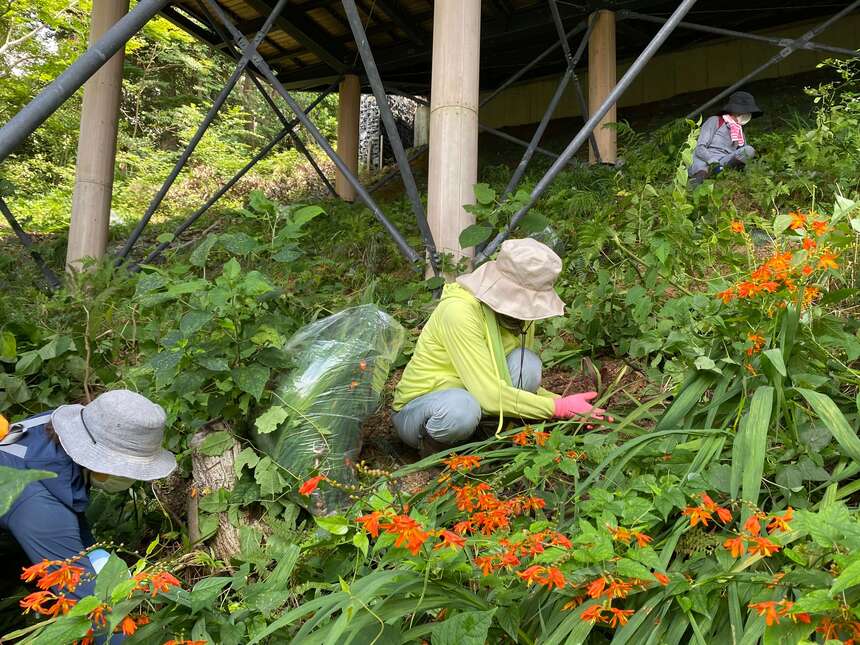Efforts to Protect Nature
- TOP
- Efforts to Protect Nature
Park Volunteers
Volunteers work alongside rangers and other staff to study and manage Ise-Shima National Park, where they can be recognized by their official logo emblem and distinctive caps.
Volunteers help with park maintenance, removing fallen branches and keeping the walking trails in shape. They also carry out ecological surveys in the Yokoyama area, tracking the population of animals like the Japanese eight-barbel loach (hotoke-dojo) and brown frog (aka-gaeru). For example, each year volunteers count the clutches of frog eggs in the ponds and wetlands of Sozo-no-Mori. The result is used to determine the number of breeding females.
Park volunteers also help fight invasive species in Yokoyama. This is a long-term, ongoing activity where volunteers uproot plants and reclaim areas for native species under the guidance of rangers and Visitor Center staff.
Outreach is another important task for volunteers. They lead groups on tours of Yokoyama and surrounding areas and hold crafting and other events for children.
There are around 40 park volunteers in all, and volunteer activities are scheduled on over 100 days every year in the Yokoyama area and elsewhere. The Ministry of the Environment handles volunteer recruitment, orientation, and registration. Rangers and Yokoyama Visitor Center staff support the volunteers in their activities, using the Visitor Center as a base.
Fighting Invasive Alien Species
Invasive alien species can harm ecosystems by competing aggressively with native species for scarce resources. In Ise-Shima National Park, invasive flora pose the greatest threat. Rangers and Visitor Center staff work constantly to uproot invasive plants and protect Ise-Shima’s satoyama and satoumi ecology. Park volunteers also participate.
Fighting invasive species is hard, labor-intensive work. Every part of the plant must be disposed of properly to prevent viable seeds or roots from growing somewhere else.
One invasive plant species that is particularly problematic in Yokoyama is montbretia (hime-hiogi-zuisen), a tough garden hybrid with distinctive orange flowers. Montbretia is recognized as an invasive weed all across the Pacific region, from New Zealand to California. It can thrive in the shade and is sometimes even found growing under Yokoyama Tenkū Café Terrace.
Invasive aquatic plants like the parrot feather (o-fusamo) are also a problem for the park’s ponds and wetlands. Aquatic species pose a particularly acute danger. If they overrun a body of water, they can prevent frogs and other animal species from reproducing there.
Another common exotic plant in Ise-Shima National Park is the lance-leaved coreopsis (o-kinkei-giku). This relative of the sunflower was originally introduced to Japan as an ornamental plant but has since been recognized as a threat to native ecosystems. It must be uprooted before it blooms in May and its seeds begin to disperse.


